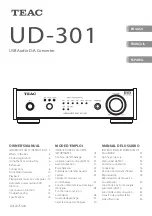
44
6.1
Overview
CW6632B Bluetooth 3.0 Audio Player SOC
Version 1.0.0
Copyright ©2015, www.appotech.com. All Rights Reserved.
6
General Purpose Input/Output (GPIO)
6.1
Overview
The general purpose input/output port (GPIO) provides 30 dedicated general purpose one-bit contacts that can be
individually configured as either inputs or outputs. Contacts configured as outputs reflect internal register values,
and those configured as inputs can be detected by reading internal registers. All GPIOs are divided into5 groups:
Port0, Port1, Port2, Port3 and Port4 .
6.2
Features
The GPIO includes the following features:
Drive specific data to output using the data register;
Control the direction of the signal using the GPIO direction register;
Enable CPU to sample the status of the corresponding inputs by reading the data register;
Enable internal pull-up resistor using pull-up resistor control register;
Select suitable pull-up resistor value;
Enable internal pull-up resistor using pull-down resistor control register;
Select suitable pull-down resistor value;
Select suitable output driving current capability;
There are 5 types of GPIO that can meet the variation of application requirements.
between pad types
Table 6-1 Pad types
Type
Driving (mA)
Pull-up resistor (Kohm)
Pull-down resistor (Kohm)
Mode
A
8
24
10
/
/
10
/
/
/
Normal
B
8
24
10
0.2
/
10
0.2
/
/
Normal
C
8
24
10
200
0.5
10
3.3
0.5
/
Normal
D
8
24
10
/
/
10
/
/
/
MUTE
E
/
/
/
/
/
/
/
/
/
Analog
6.3
Function multiplexing
In order to provide more flexible port functions and to minimize pin counts, some of the ports are multiplexed with
other peripherals or functions.
illustrates the “Ports multiplexed mapping”.
Several GPIO are multiplexed with analog module. GPIO digital input and output must be disabled when the
corresponding analog module is enabled.
Table 6-2 Ports multiplexed mapping
















































